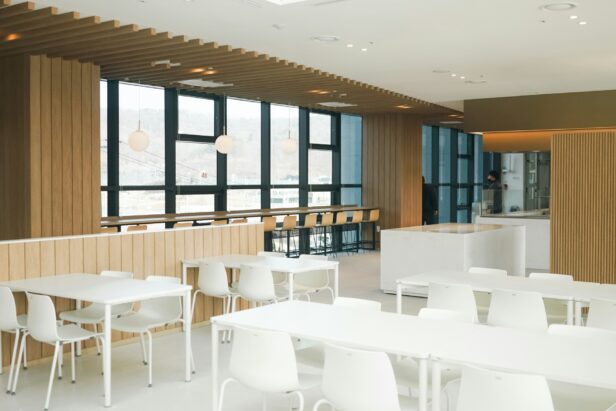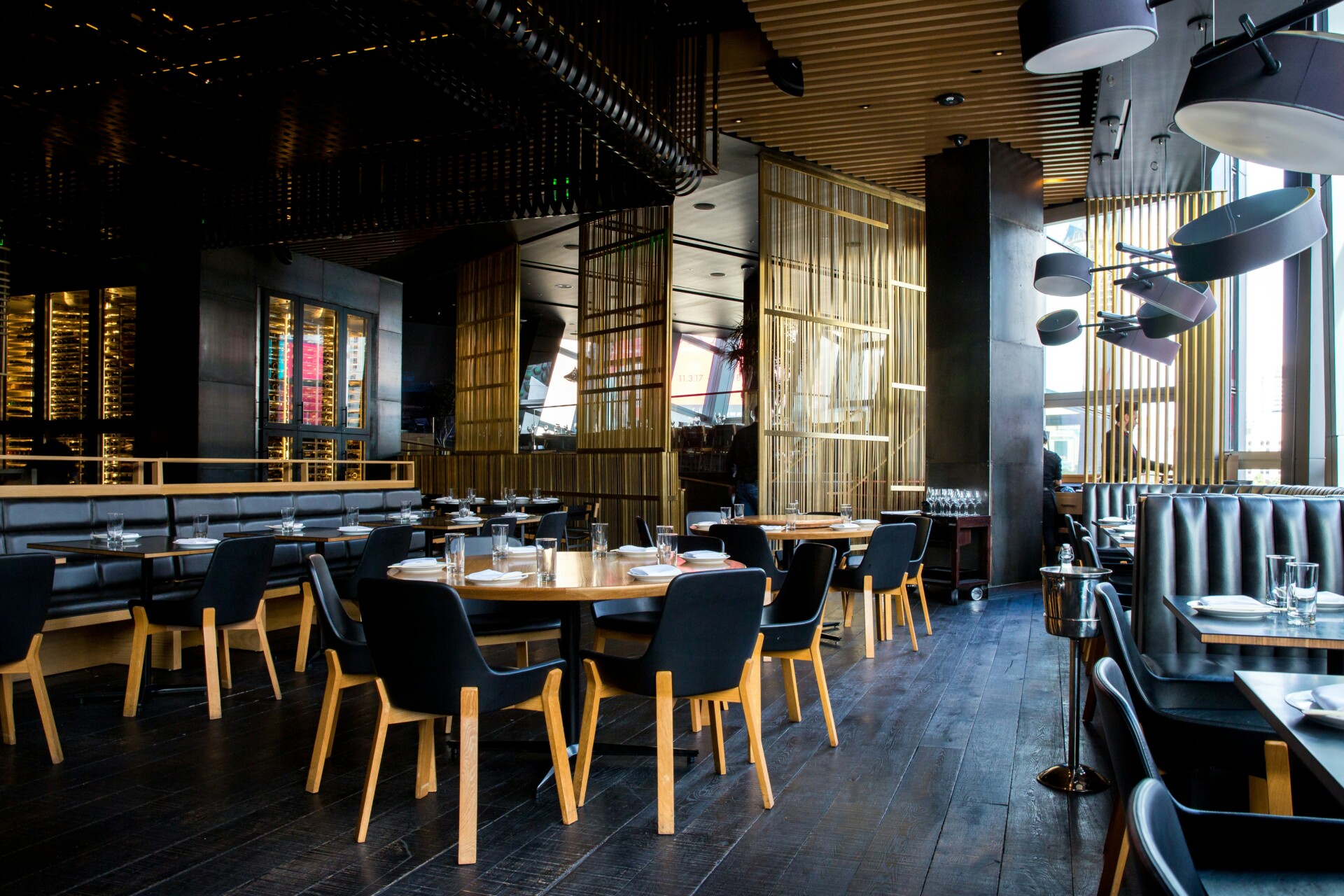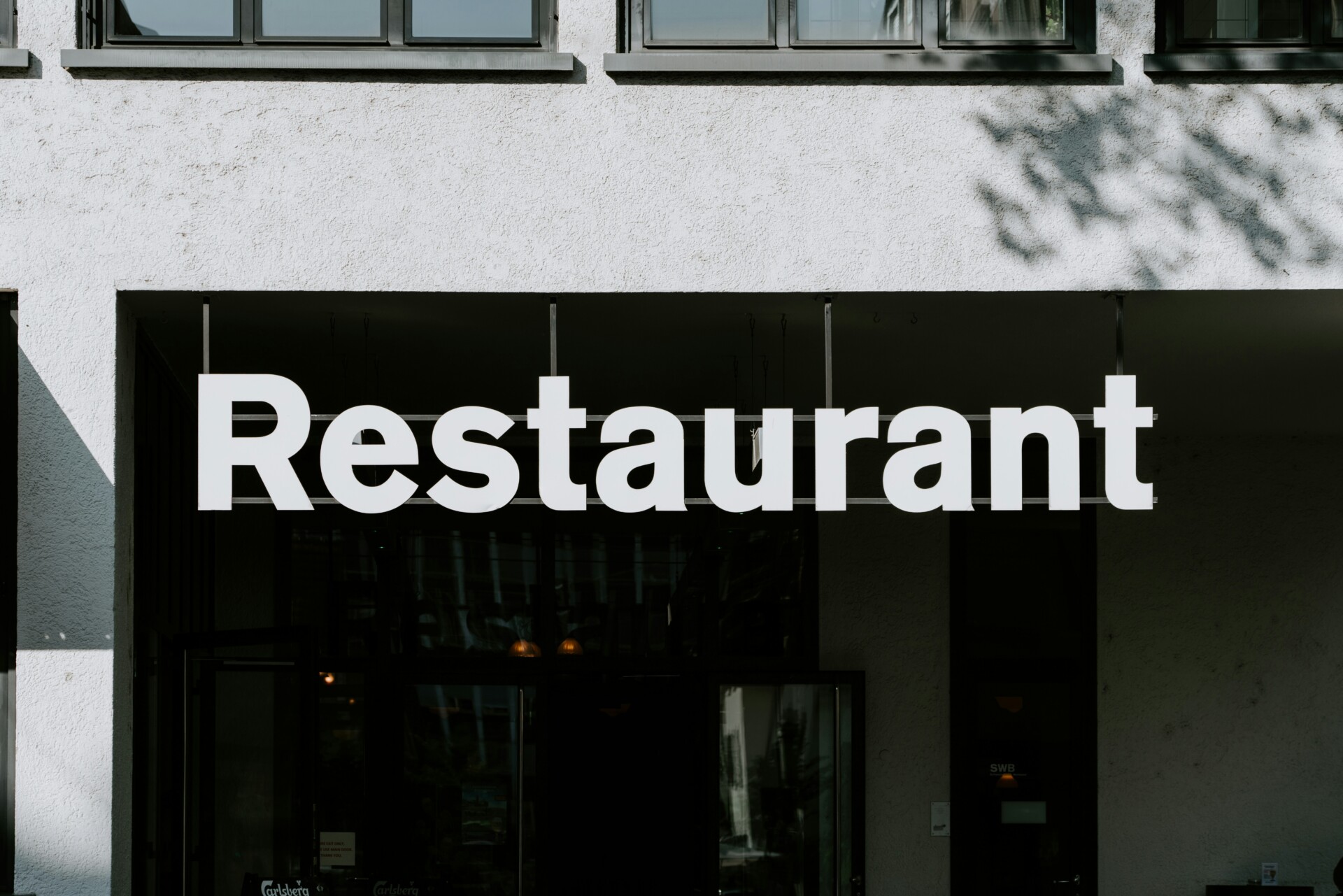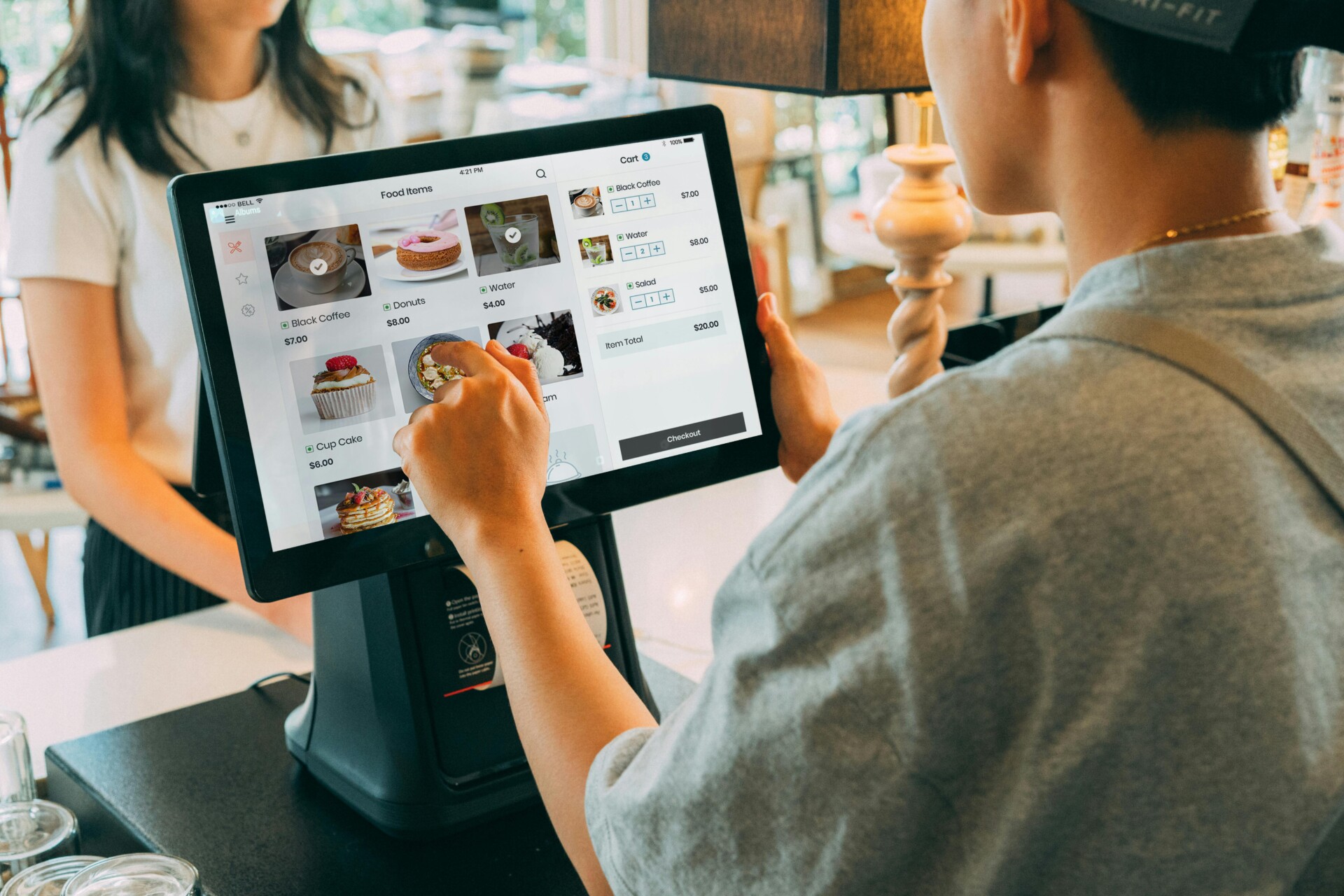Restaurant design shapes the entire dining experience. It’s not just about creating an attractive space – thoughtful design can determine a restaurant’s success. When developing concepts, we consider how every element affects guests’ comfort, mood, and overall impression.
Effective design marries form and function. The layout must facilitate smooth operations and traffic flow while establishing the right ambiance. Color schemes, lighting, furniture, and decor all collaborate to reinforce the restaurant’s brand identity and create a cohesive atmosphere that resonates with the target clientele.
Well-executed design elevates simple meals into memorable experiences. It can transport diners to another place or time, encourage social interaction, or create intimacy. The environment we craft complements the cuisine and supports the restaurant’s story. When design, food, and service align, they form a powerful brand that keeps customers returning.
What Elements Create an Effective Restaurant Interior Design?
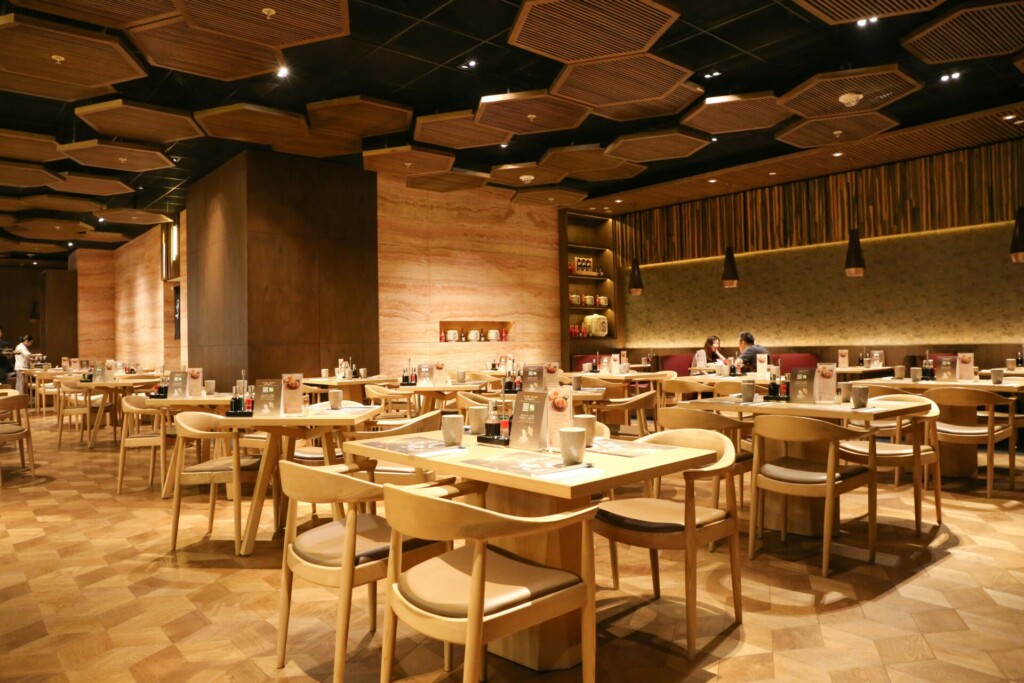
Successful restaurant interior design integrates several key elements that work in harmony to create a memorable dining experience. As general contractors, we understand how crucial it is for these components to align with both the practical needs of restaurant operations and the desired ambiance. Here are some essential elements:
Lighting: Setting the Mood
Lighting fixtures play a pivotal role in establishing the atmosphere of a restaurant. We carefully select and position lighting to enhance the dining experience. Soft, warm lighting can create an intimate feel for fine dining, while brighter, more energetic lighting suits casual eateries. By incorporating a mix of ambient, task, and accent lighting, we ensure the space is functional yet inviting.
Thematic Consistency: Telling Your Story
Every design element should reinforce your restaurant’s concept and brand identity. From the entrance to the dining areas and even restrooms, we maintain a cohesive theme that tells your unique story. This consistency helps create a memorable experience that guests will want to revisit and share.
Strategic Layout: Optimizing Flow and Comfort
The layout of a restaurant is critical for both operational efficiency and guest comfort. We design spaces that allow for smooth traffic flow, comfortable seating arrangements, and optimal server paths. This thoughtful planning enhances the dining experience while improving staff productivity.
Material Selection: Balancing Aesthetics and Durability
Choosing the right materials is crucial in restaurant design. We select finishes and furnishings that not only look great but can also withstand the rigors of daily use. Durable yet stylish surfaces, easy-to-clean fabrics, and quality furniture all contribute to a space that remains appealing over time.
Modern Design Features
Today’s restaurant designs often incorporate elements that add visual interest and functionality:
- Accent walls that create focal points and reinforce the brand’s color scheme.
- Greenery and living walls to bring a touch of nature indoors.
- Communal dining spaces that foster a social atmosphere.
- Open kitchen concepts that add transparency and theater to the dining experience.
Color and Decor: Reflecting Your Brand
The choice of colors and decor items should align closely with your brand identity. We work to create a palette that evokes the right emotions and complements your cuisine. Whether it’s minimalist elegance for a high-end establishment or a vibrant character for a casual eatery, every element is chosen with purpose.
At EB3 Construction, we believe that effective restaurant interior design is about creating a cohesive atmosphere where all elements work together seamlessly. Our approach ensures that the space not only looks impressive but also functions efficiently to support your business goals and enhance the overall dining experience for your guests.
| Element | Description |
|---|---|
| Lighting | Sets the mood with a mix of ambient, task, and accent lighting to enhance the dining experience. |
| Thematic Consistency | Reinforces the restaurant’s concept and brand identity throughout all areas. |
| Strategic Layout | Optimizes flow and comfort, allowing for smooth traffic and comfortable seating. |
| Material Selection | Balances aesthetics and durability with finishes that withstand daily use. |
| Modern Features | Includes accent walls, greenery, communal spaces, and open kitchens to add interest and functionality. |
| Color and Decor | Reflects brand identity with a palette and decor that complement the restaurant’s theme. |
By carefully considering and integrating these design elements, we help create restaurants that not only attract customers but keep them coming back. The right interior design can turn a good meal into an extraordinary dining experience, fostering customer loyalty and positive word-of-mouth.
How Should You Plan Your Restaurant Floor Layout?
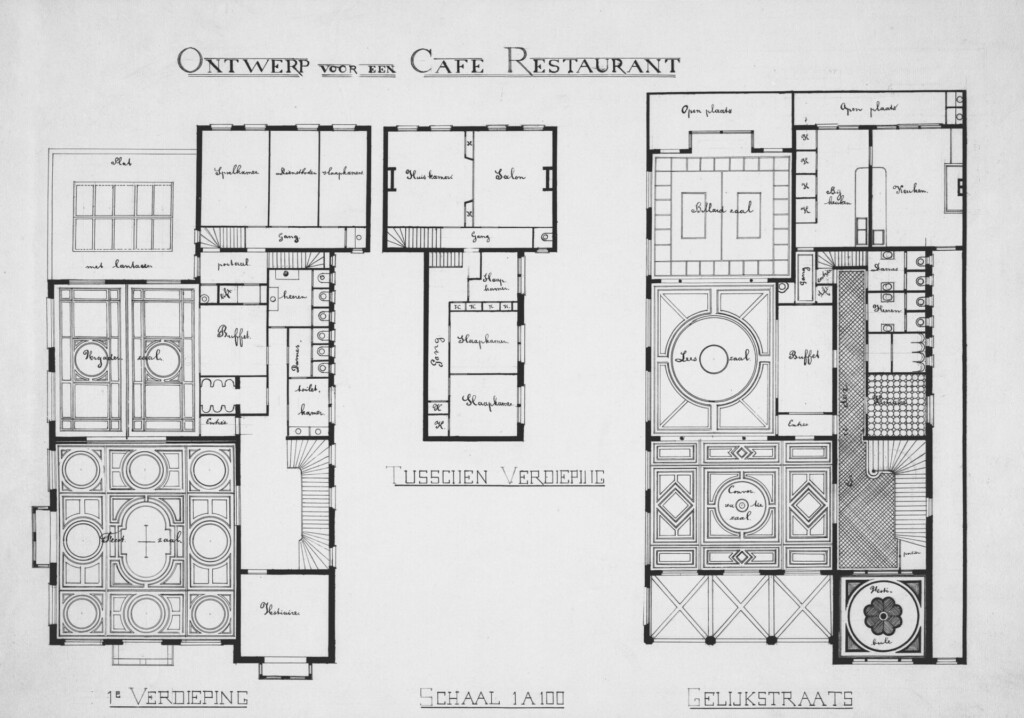
Effective restaurant floor planning begins with identifying essential spaces: entrance/waiting areas, dining room, bar, kitchen, storage, restrooms, and outdoor seating. As general contractors, we understand that thoughtful space allocation is crucial for operational efficiency and guest comfort.
Industry standards suggest allocating approximately 60% of total space to the dining area and 40% to back-of-house functions. This provides a solid starting point, but we work closely with restaurant owners to fine-tune these percentages based on their unique concept and service model.
Proper spacing between tables is vital for both guest comfort and staff mobility. Our team typically recommends 18-20 inches between occupied chairs and 42-60 inches between parallel tables. This spacing allows comfortable dining while maintaining efficient traffic flow for servers.
When developing the floor plan, we carefully consider traffic patterns that enable staff to move efficiently while preserving a pleasant dining atmosphere. Strategic placement of server stations and thoughtful arrangement of tables can significantly impact operational flow.
The layout must balance maximizing seating capacity with ensuring comfortable spacing. We tailor our approach based on the restaurant type:
- Fine dining establishments typically require 18-20 sq. ft. per person
- Casual full-service restaurants generally need 12-15 sq. ft. per person
- Fast-casual concepts can often work with 11-14 sq. ft. per person
Beyond these core considerations, we analyze factors such as kitchen ergonomics, accessibility compliance, and the integration of design elements to create a cohesive and functional space. Our goal is to develop a floor plan that not only meets immediate needs but can also adapt to evolving business requirements.
| Type of Venue | Required Sq. Ft. Per Person |
|---|---|
| Fine Dining | 18–20 |
| Full-Service Restaurant | 12–15 |
| Counter Service | 18–20 |
| Fast Food | Minimum 11–14 |
| Table Service/Hotel/Club | 15–18 |
| Banquet/Event Hall | 10–11 |
By leveraging our construction expertise and understanding of restaurant operations, we help owners optimize their floor plans to enhance both the guest experience and operational efficiency. The right layout sets the foundation for a successful restaurant, and we are committed to getting it right from the ground up.
What Makes a Functional Commercial Kitchen Design?

A successful commercial kitchen layout balances efficiency, safety, and functionality. To create a well-designed kitchen that optimizes workflow, consider incorporating several key components:
Key Components of a Commercial Kitchen
An effective commercial kitchen should include five essential elements:
- Storage areas for ingredients, equipment, and supplies
- Washing stations for food and dishes
- Food preparation areas
- Cooking stations
- Service areas for plating and pickup
The layout should facilitate a smooth flow between these different stations to maximize efficiency.
Popular Commercial Kitchen Layouts
Several common kitchen layout designs can serve as a starting point:
- Assembly line layout: Ideal for fast-food establishments with limited, systematic menus. This layout allows for efficient high-volume production.
- Island layout: Best for spacious kitchens, with cooking equipment in a central island and other stations around the perimeter.
- Zone-style layout: Suited for restaurants with diverse menus, dividing the kitchen into distinct zones for different tasks.
- Galley layout: Perfect for small spaces like food trucks, arranging equipment along two parallel walls.
- Open kitchen layout: Popular in high-end restaurants, allowing customers to view food preparation.
The optimal layout for your restaurant depends on factors like your menu, available space, and service style. Consider consulting with a kitchen design professional to determine the best configuration for your specific needs.
Designing for Optimal Workflow
When planning your kitchen layout, keep workflow in mind. The design should support a logical progression from:
- Receiving deliveries
- Storing ingredients
- Preparing food
- Cooking dishes
- Plating and serving meals
Minimize unnecessary movement and create clear paths between stations to improve efficiency, reduce accidents, and allow your back-of-house team to work more productively.
A well-designed commercial kitchen is the foundation of a successful restaurant operation. By carefully considering layout options and optimizing for workflow, you can create a kitchen that enhances efficiency, safety, and the overall quality of your food service.
Conclusion: Creating a Restaurant Design That Enhances Customer Experience
Restaurant design is an art that requires careful consideration of various elements, including concept development, space planning, ambience, functionality, sustainability, and budgeting. A well-executed design enhances both the dining experience for customers and operational efficiency for staff. By thoughtfully planning your restaurant’s layout—from the welcoming entrance to the functional kitchen—you create an environment that reflects your brand identity and leaves a lasting impression on guests.
Whether designing a new restaurant or renovating an existing space, prioritizing both aesthetics and functionality is crucial to creating a restaurant that delights customers and stands the test of time. An effective design seamlessly integrates your restaurant concept into every aspect of the space, from the decor to the flow of service. This holistic approach ensures that diners experience your brand’s unique story and values from the moment they step inside.
The goal of restaurant design is to cultivate an atmosphere that not only looks appealing but also enhances customer satisfaction. By carefully considering factors like lighting, acoustics, seating arrangements, and visual elements, you can craft spaces that encourage longer visits, increase customer loyalty, and drive word-of-mouth recommendations. A thoughtfully designed restaurant becomes more than just a place to eat—it transforms into a destination that customers eagerly anticipate returning to again and again.
As you embark on your restaurant design journey, remember that creating memorable dining spaces is about striking the perfect balance between form and function. With careful planning and attention to detail, you can develop a restaurant environment that not only impresses visually but also operates smoothly and efficiently. The result? A dining experience that keeps customers coming back and a business poised for long-term success.
Ready to bring your restaurant vision to life through exceptional design? Contact EB3 Construction today to discuss how we can help create a stunning and functional space that elevates your brand and delights your customers.

